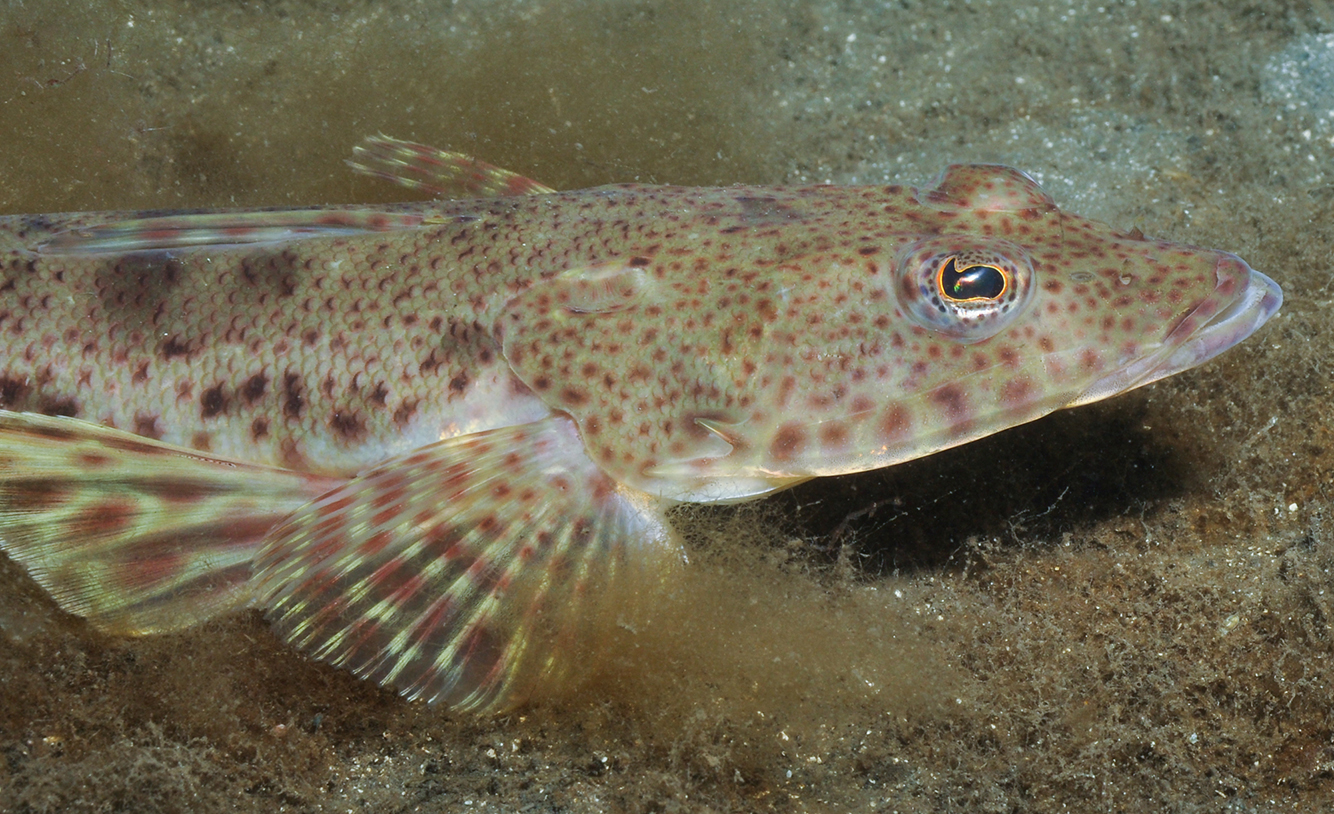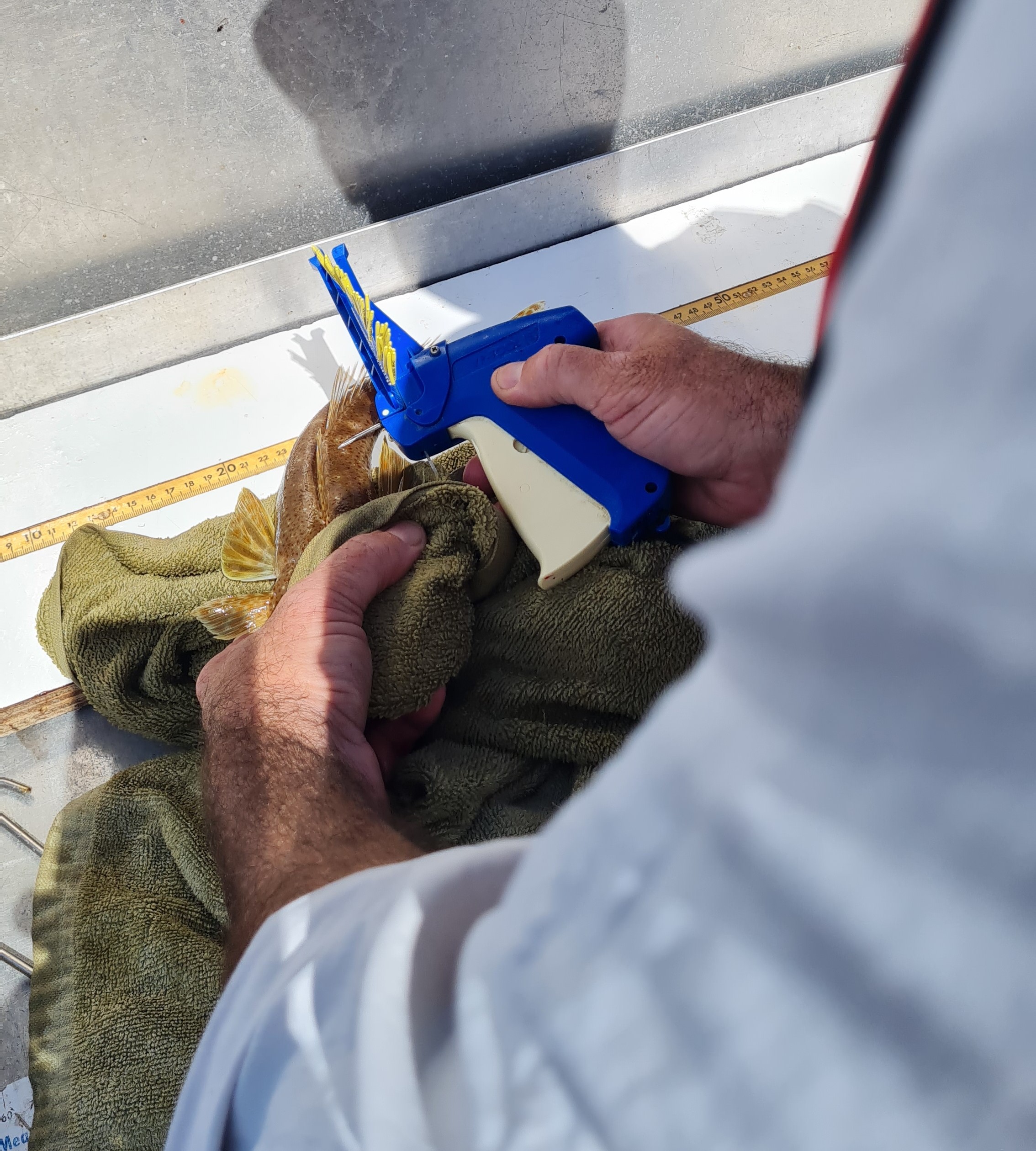
World-leading fisheries science, governments and the recreational fishing sector in Tasmania have joined forces to fill the scientific knowledge gaps about Sand Flathead’s biology, movement and growth, to recover this much-loved species for future generations to enjoy.
The University of Tasmania’s Institute for Marine and Antarctic Studies (IMAS) has recently been awarded a $3.29 million research grant supported by the Australian Government’s Fisheries Research and Development Corporation, with a $900,000 cash investment from the Tasmanian Government’s Department of Natural Resources and Environment Tasmania.
“Our new research will focus on improving the stock health of this popular fish to acceptable levels, as quickly as possible,” said fisheries scientist Professor Sean Tracey, who will lead the project at IMAS.
Sand Flathead accounts for 68% of all recreational fish taken from Tasmanian waters caught by around 70,000 recreational fishers each year. This recreational catch accounts for about 98% of the total catch of the species in the state.

“They have been the ‘bread and butter’ species for recreational fishers in Tasmania for decades, but their popularity and ease of capture has led to them becoming ‘depleted’,” Professor Tracey said.
“The current level of fishing mortality (fish removed by fishing) is around four times the natural mortality rate, which has driven the biomass to low levels. The biomass will not begin to recover until the fishing mortality rate is below the natural mortality rate – and that requires a significant reduction in catch.”
IMAS researchers have also found that fishing pressure appears to have resulted in stunted sub-sections of the population in some areas, so recovering the larger, fast-growing individuals in the population is an important focus.
 “These bigger fish are genetically ‘fitter’, produce more eggs and provide a higher meat yield and a better fishing experience for anglers. Gaining a better understanding of how prevalent these fish are in the population structure will provide greater clarity on the recovery for the biomass as a whole,” Professor Tracey said.
“These bigger fish are genetically ‘fitter’, produce more eggs and provide a higher meat yield and a better fishing experience for anglers. Gaining a better understanding of how prevalent these fish are in the population structure will provide greater clarity on the recovery for the biomass as a whole,” Professor Tracey said.
“The primary objective of the project is to develop models to predict and measure the recovery trajectory of the stock around the state. This will reveal how long the biomass will take to recover towards, and ideally above, a target of 40% of the pre-fished biomass – which is an accepted measure of sustainability in fisheries science.”
Along with investigating the fish stock, the project seeks to understand more about the values of the fishers who catch Sand Flathead, so researchers will work closely with Tasmania’s peak body for marine recreational fishing, TARFish, and recreational fishers themselves.
University of Tasmania Behavioural Economics researcher Professor Swee-Hoon Chuah said working with fishers to understand what they would like the fishery to look like was an important aspect of the project.
“With these insights, effective and collaborative management strategies can be delivered, as well as education and engagement activities that will include a stewardship program – and this will increase social acceptance and contribute to stock recovery,” Professor Chuah said.
 TARFish CEO Jane Gallichan said recreational fishing was part of the Tasmanian way of life, so people in this fishery are particularly relevant. “Fishing creates social, cultural, health and economic value right around the state, for the benefit of all Tasmanians,” Ms Gallichan said.
TARFish CEO Jane Gallichan said recreational fishing was part of the Tasmanian way of life, so people in this fishery are particularly relevant. “Fishing creates social, cultural, health and economic value right around the state, for the benefit of all Tasmanians,” Ms Gallichan said.
Through the project, TARFish will develop a stewardship program to encourage fishers to learn more about the fish and fishery, and to think about practices they can introduce into their fishing behaviour to minimise their impact while still enjoying their day on the water fishing.
“We know rec fishers want to do the right thing and our aim is to help them do just that. Fisher-led stewardship that supports a sustainable fishery and protects our way of life will mean that we can all enjoy catching and consuming flathead for decades to come.”
The Minister for Primary Industries, Jo Palmer welcomed the announcement of this research grant.
“The important scientific research undertaken by IMAS to date has underpinned the difficult but necessary decisions that I have made to support recovery of this State’s iconic Sand Flathead fishery.
"This grant announcement is wonderful news and I am confident this project will further strengthen the body of knowledge we have on the fishery and what is needed to optimise its recovery.”
Fast facts:
The Filling the knowledge gaps to recover Tasmania's favourite recreational fishery project will improve our understanding of how to best recover the stock to target levels of 40% or greater of the unfished levels through fishery management. This includes:
 developing spatio-temporal length-based and individual-based assessment models to predict and measure regional stock recovery trajectories, along with other important biological and ecological factors that optimise recovery
developing spatio-temporal length-based and individual-based assessment models to predict and measure regional stock recovery trajectories, along with other important biological and ecological factors that optimise recoveryThis builds on an existing Fisheries Research and Development Corporation (FRDC) project valued at $700,000, which enabled the expansion of baseline monitoring and a more in-depth modelling process that confirmed the current ‘depleted’ status of the stock. Learn more about IMAS Sand Flathead research.
Images:
Published 9 November 2023